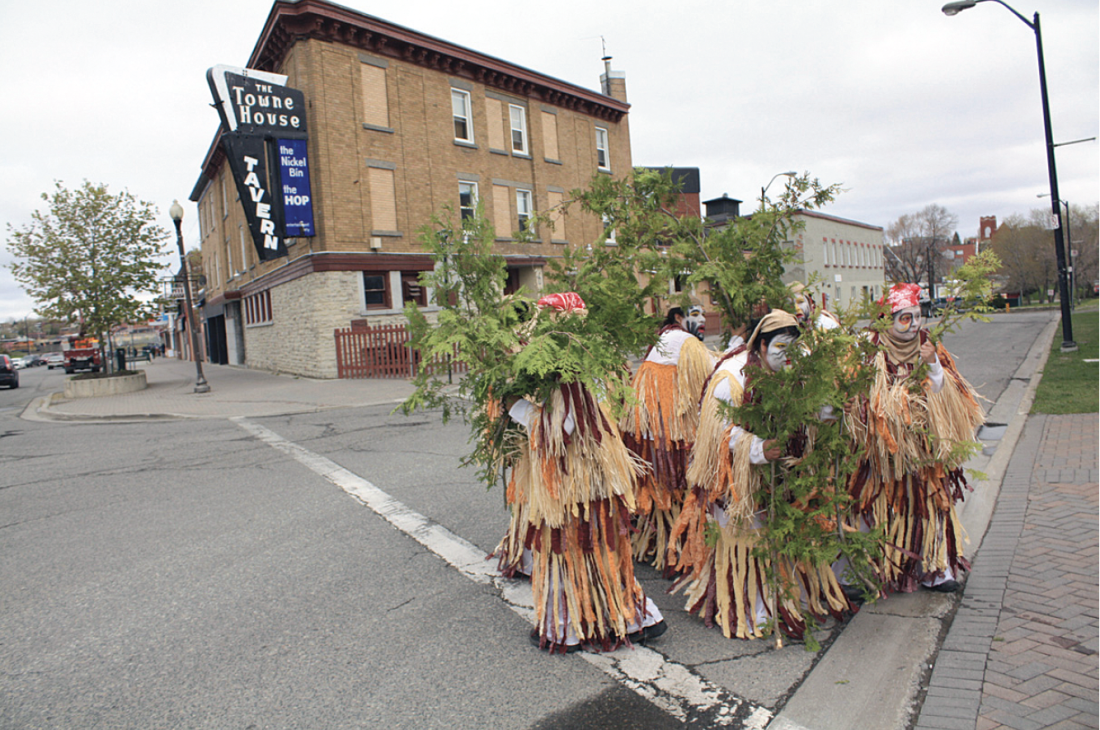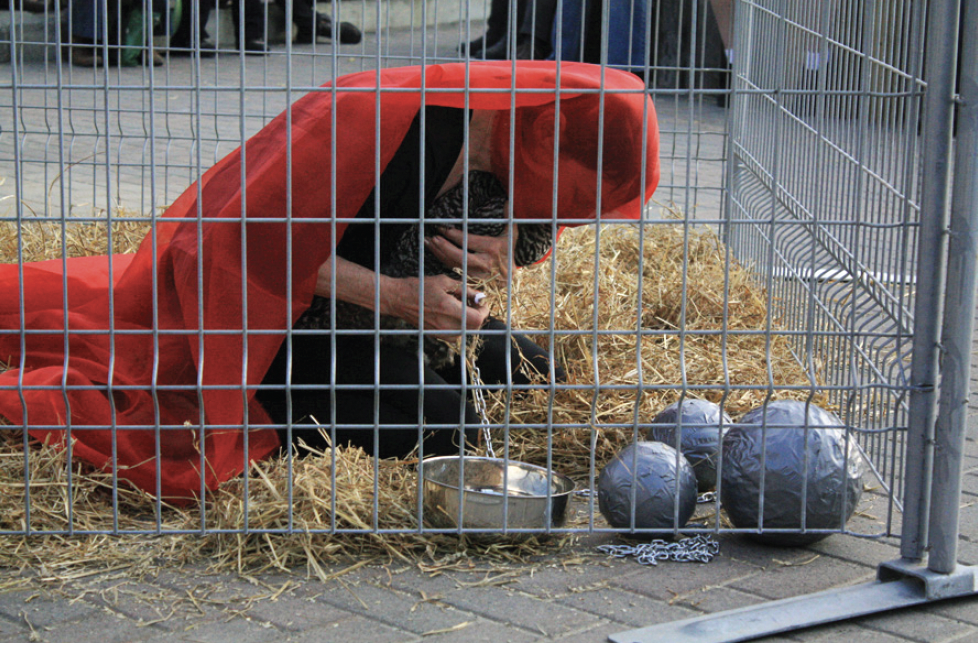“Foire d’art alternatif de Sudbury”
“Art arises out of constraint, lives on struggle, and dies of freedom.” Forty artists from Ontario, Quebec and New Brunswick experienced these words by André Gide at the third Foire d’art alternatif de Sudbury (FAAS 3) from May 9th to May 12th, 2012. The theme of the art fair was L’art au pied carré (Square Foot Art). Each participant was allocated four 8-foot long construction site fences and was given the challenge to create an installation within the 64-square-foot enclosure and inside the four days of the happening. The FAAS, a biennial event organized by la galerie du nouvel-ontario (GNO), an artist-run centre, has a mandate that encompasses the whole of the French community in Ontario. This third edition took place in the Market Place building in downtown Sudbury with the building open to the public throughout each day. This created an interesting context where artists were questioned by passers-by as they were going through their creative process. Activity on the railway tracks barely 100 metres away produced a peculiar, metallic sound effect in the background. As one would have expected, the Market Place was constructed with a central aisle having stall-ready sections on each side, an ideal environment for the challenge given to the participants.
Walking up and down the main hall engaged visitors in a seemingly compressed studio tour. Some artists were willing to interact freely while others tended to concentrate on their work. Some discussed their artistic processes openly while others seemed ill at ease revealing their backstage secrets. One thing prevailed: in the context of an event like the FAAS, the process dominated the finished work. To fully appreciate the true nature of the fair, it was necessary to be present through the whole four days rather than attend only the final or closing event.

The Global Savages of Debajehmujig, storytellers from Manitoulin Island, Ontario. Performance at Fair of Alternative Art of Sudbury (FAAS 3), 2012. Photographs: Camille Tremblay Beaulieu. Images courtesy Galerie du Nouvel-Ontario, Sudbury.
The notion of territory was clearly central to the deployment of each installation. Several key points differentiated the various projects: how transparent the fences remained, how accessible the enclosure was and how tangible its boundaries stayed. Some participants kept their site in view but tightly shut—no getting in without being invited. Others covered their enclosure—visitors couldn’t see what was inside and needed to gain access through an entrance. Some had entrance to their enclosure from within the building while others opened it up through a door giving onto the outside—turning their back to the artistic community and making their proposal readily accessible to the general public. Some even set up their installation on the esplanade outside the building. The original gating role of the construction fences was abandoned by some, with the work bursting out of the prescribed 64 square feet and extending into the central aisle. In other cases, the fences were squarely integrated with the installations as supports.
The installation and performance by The Global Savages developed perhaps the most complex relationship to the space. The collective is a creation of the Debajehmujig Theatre Group (the Ojibway name means storytellers) from Manitoulin Island, Ontario. Their contribution was both open and secretive. Two mornings in a row they carried out a performance, walking from their hotel to the Market Place. They wore traditional dresses that were only slightly altered. They started their walk hidden behind cedar branches, which they gradually parted, engaging with people on the street. Yet, they addressed them in a form of non-speech. Their installation at the Market Place opened directly onto the outside; there was no access from within the building and their enclosure was double-walled. At the centre was a small pen, an inaccessible, sacred area covered with cedar branches and holding some symbolic objects. On the outside was another blacked-out fence covered with messages to Mother Earth, leaving a passageway to circulate around the middle shrine. Access was overseen by The Global Savages themselves.

Colette Jacques. Performance at Foire d’art alternatif de Sudbury (FAAS 3), 2012.
Each participant in the FAAS ended up creating a heterotopia, a concept developed by French philosopher Michel Foucault. In his essay “Of Other Spaces,” 1967, Foucault described a heterotopia as “a kind of effectively enacted utopia in which the real sites…are simultaneously represented, contested, and inverted.” He noted, “places of this kind are outside of all places, even though it may be possible to indicate their location in reality.” A heterotopia is deviant, evolving, multiple, transitory, inclusive/exclusive and related to other spaces. At the start, FAAS 3 deflected the normal use of the Market Place. Many artists did not even conform to the directive of creating within their confined area. Their work evolved considerably over the time span of the fair. Within the single Market Place, they created their own distinctive spaces, incompatible with one another. They were also set in a transitory and precarious time frame. Their installations carried an ambivalent relationship to access; sites were both isolated and penetrable. Entering an installation required an implicit permission so visitors always felt in transit. Finally, the installations produced spaces of illusion. The creations of the FAAS were literally out of this world and out of this time.
As the week progressed, art by the square foot became art by the hour. All artists had gone through much conceptual preparation in advance of the fair. Many had already shaped some of their material or were adapting material from earlier installations. Several depended on elements gleaned on location. Everyone faced the challenge of making space itself part of their creation while keeping an eye on the clock. Several installations were also paired with performances.
The vernissage took place on the evening of May 12th. In the original meaning vernissage referred to the “varnishing day,” when artists would coat their works with a hard and transparent layer indicating they were completed. At the FAAS, though, each installation and each performance belonged to a much more encompassing artistic course. The creation process was at least as significant as the outcome. In fact, contemporary art is never covered with a definitive hard and transparent layer. In some sense, it always remains to be completed. ❚
“Foire d’art alternatif de Sudbury” (FAAS 3) occurred at la galerie du nouvel-ontario, Sudbury, from May 9th to May 12th, 2012.
Raymond Aubin is an artist in contemporary photography. He also writes art reviews. He holds a degree in Arts and Design.

